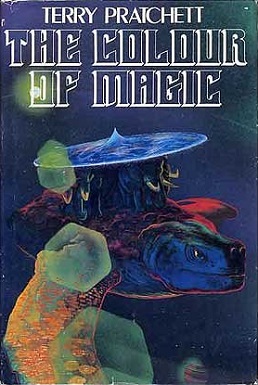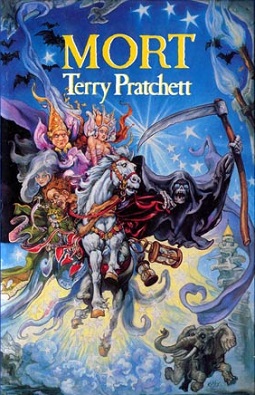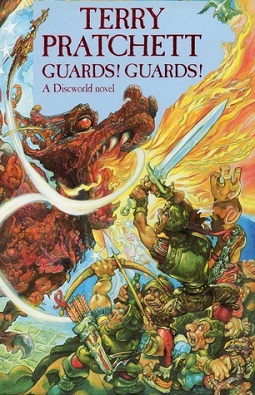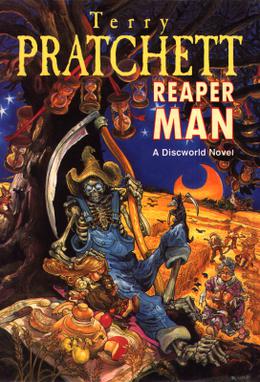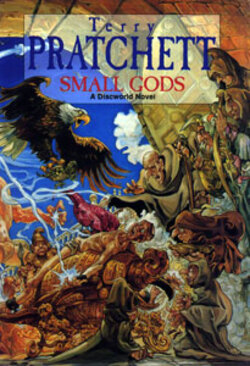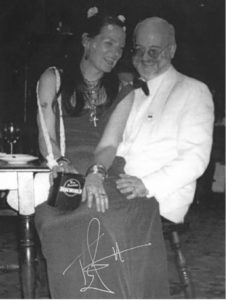Ronald.phillips
Shared posts
Xbox Series X and S Boot Up Five Seconds Faster Following Update - CNET
Microsoft is Speeding Up Xbox Boot Times
Read more of this story at Slashdot.
The Three Iconic Star Trek Characters Played By David Warner
Actor David Warner died on July 24, 2022 at the age of 80, leaving behind a decades-long career of stage and screen that stretched from Shakespeare to "Freakazoid!" The Emmy-winning actor began his career in 1962, appearing on stage as an extra in "A Midsummer Night's Dream" and as Conrad in "Much Ado About Nothing." That same year, Warner garnered his first (uncredited) film appearance in the comedy "We Joined the Navy" as well as his first TV appearance in the televised play "Madhouse on Castle Street."
Since those early days, Warner worked constantly in films and TV, gathering a great deal of fans around him from his association with well-received genre films like "The Omen," "Time Bandits," "The Man With Two Brains," "Teenage Mutant Ninja Turtles II: The Secret of the Ooze," and many others. In 2001, he returned to theater, and entered a phase in his career where he could play King Lear one day and The Doctor from "Doctor Who" the next. His range, devotion, and enthusiasm will be missed.
Warner, as all Trekkies know, had a close relationship to "Star Trek," having appeared in two Trek feature films and on one series, each time playing a vastly different character. Warner left a deep impression, creating a memorable new addition to the franchise's canon. Indeed, one of Warner's roles is perhaps one of the best to ever emerge from "Star Trek: The Next Generation" in the series' single most intense episode.
St. John Talbot
Say what you will about William Shatner's 1989 film "Star Trek V: The Final Frontier" — and there are plenty of negative things that can be said — it certainly didn't lack for interesting ideas. The plot of that film involved a passionate Vulcan named Sybok (Laurence Luckinbill), secretly Spock's half-brother, taking hostages at a remote outpost in order to lure to Enterprise to their rescue. The outpost, located on Nimbus III, was meant to be an attractive galactic "neutral ground" where warring governments could come together for peaceful diplomatic negotiations. The outpost, however, failed long ago, and the ironically named Paradise City is now a desert wasteland overrun by criminals and alcoholics.
Into this sad place came three embittered and burnt-out diplomats — one from the Klingon Empire, one from Romulus, and one from Earth — meant to serve as Sybok's hostages. Warner played St. John Talbot, the human ambassador who, although only serving a supporting role, carried with him the weariness of a job done poorly. Talbot's professional skill had long since become useless, and it seemed as if he had fallen from a once-great height. Talbot's backstory is made more explicit in J.M. Dillard's novelization of "Star Trek V" which explains that he once failed during an important Andorian mission, and turned to booze and cigarettes in its aftermath. Talbot is one of the few smokers to appear on screen in "Star Trek" history.
Although none of that backstory is explained in the final film, Warner's performance manages to communicate Talbot's exhaustion. His first name makes him sounds like a saint. He wasn't.
Chancellor Gorkon
In Nicholas Meyer's 1991 film "Star Trek VI: The Undiscovered Country," Warner returned as a diplomat, only this time in a much more hopeful mode. In "Country," the entire Klingon moon of Praxis — a vital source of natural resources — explodes in a mining accident. The explosion leads the already-waning Klingon Empire reluctantly to the negotiation tables to finally talk about an end to the Cold Wars they and the Federation had been embroiled in for decades. Yes, "Country" is a metaphor for the falling of the Iron Curtain and the end of the real life Cold Ward between the United States and Russia (which had experienced a coup earlier that year). Praxis could even be seen as an analogue for the accident at Chernobyl. This is the most political of the Trek feature films.
In "Country," Warner plays Chancellor Gorkon, a high-ranking Klingon official who meets with Kirk (Shatner) face-to-face in order to attempt friendly relations. Diplomacy is rough going and the humans and Klingons don't necessarily get along very well; the intimidating General Chang (Christopher Plummer) seems upset that such let's-be-friends meetings are now required. Gorkon, however annoyed he might seem at meeting with humans, does indeed believe in a lasting peace and is determined to be on his best behavior. It will be Gorkon who will be assassinated by secret murderers in order to stymie peace talks.
Unlike his burnt-out diplomat in "Frontier," Warner brings an authoritative warmth to Gorkon. Kirk and co. are intimidated by him, but are careful to listen and welcome him. He's someone devoted to peace, but also someone you don't want to disappoint. When he arrives on the Enterprise, it's like your college professor is visiting your house. Don't say anything dumb in front of him.
Gul Madred
One of the better episodes of "Star Trek: The Next Generation" is a two-part espionage thriller called "Chain of Command" that aired at the end of 1992 in the middle of the show's sixth season. In it, Capt. Picard (Patrick Stewart) goes on a covert sting operation to destroy a secret Cardassian biological weapons facility. Picard finds no weapons, however, and is captured by the cold-eyed, soulless Gul Madred (Warner) who explains that the facility was a trap.
The second part of "Chain of Command" is devoted to the tête-à-tête between Madred and Picard, with Picard stripped of his clothes and his dignity and tortured incessantly. Madred attempts to sadistically impose his will on Picard, and it becomes clear that Madred doesn't so much need information as he needs to prove that humans are weak-willed and can be dominated. Picard, as he withers from starvation and injury, finds that Madred is, in fact, little more than a wounded bully, his Nazi-like thirst for dominance springing from a specific moment of childhood embarrassment.
The crux of "Chain of Command" is Madred shining four spotlights into Picard's eyes. He insists Picard admit there are, in fact, five lights. Picard, in the midst of torture, finds himself tempted into to seeing — into being convinced there are — five lights. This carries echoes of George Orwell's "1984," wherein the government insists it has the power to dictate that 2+2=5.
Warner is chilling as Madred, and the actor wholly projects the confidence, arrogance, and pathos of the character. He brought depth to the role, layering his performance to match the character's backstory. It's not an overstatement to say Madred is among the best "villain" characters in all of "Star Trek" — all thanks to the extremely talented Warner.
Read this next: Actors Who Died In 2021
The post The Three Iconic Star Trek Characters Played By David Warner appeared first on /Film.
Ancient Lava Caves in Hawai'i Are Teeming With Mysterious Life Forms
Read more of this story at Slashdot.
T-Mobile to Pay $350 Million to Customers Affected by 2021 Data Breach

T-Mobile has finally reached a settlement to a class-action lawsuit and has agreed to pay $500 million for a data breach that happened in 2021.
The massive leak managed to expose the personal information of around 76.6 million U.S. residents. This leak included Social Security numbers, names, addresses, as well as driver's license information of all T-Mobile customers.
T-Mobile Has Agreed to a $500 Million Class Action Lawsuit Settlement with $150 Million Going to its Security Improvement
An amount of $350 million will be divided between those who have been affected by the breach who respond to the class action settlement and the lawyers on the case.
As far as the individual payout is concerned, that depends on how much the lawyers are paid and how many people claim the settlement, in the first place. So, various T-Mobile customers end up getting paid different amounts.
However, the court filing does not have any separate terms for the people affected differently by the data breach. So even if not all the personal details of the affected were leaked, they would still be eligible for an equal settlement.
As far as the remaining $150 million of the $500 million settlement is concerned, that will go towards the security improvements that T-Mobile will be making across the network fro now and 2023.
For those wondering, T-Mobile will be notifying the affected subscribers about the settlement. Once that is done, you will have to follow the procedure and claim the amount for yourself.
You can read all about the settlement here.
The post T-Mobile to Pay $350 Million to Customers Affected by 2021 Data Breach by Furqan Shahid appeared first on Wccftech.
How to Build a Personal DIY Cloud Storage With Remote Access
Cloud storage is a necessity today with so much data around us. It helps secure your important files from accidental data loss and allows you to access the files from anywhere remotely. Although you get some free storage space with many cloud providers, it may not be enough for your needs, and you may have to shell out for their paid plans.
Brutal Doom v22
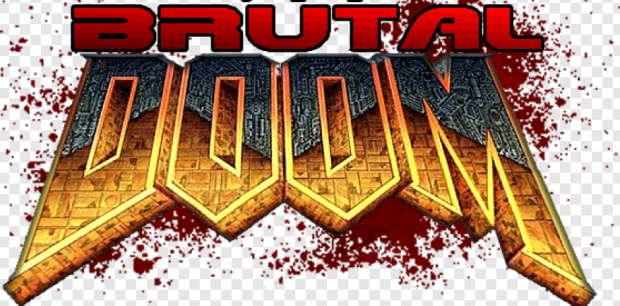
The whole world becomes more real and interactive.You can kick severed limbs and heads (and sometimes, use it to activate some traps in the map earlier, or even kick them against enemies to do some damage), you can shoot enemies' heads to deal more damage (and cause more gruesome deaths) you can destroy most things in the the scenario (trees, lamps, hanging bodies, etc), you can paint the floor, the walls, and even the ceiling with blood, you can push the explosive barrels to make traps, or grab them and use like an explosive weapon, you can silently take down enemies from behind and perform stealth kills, the chainsaw actually cuts the enemies in two. When you find the berserk pack and get super strength, you can perform cinematic executions and RIP AND TEAR your foes with your bare hands. Some enemies will scream in anguish and try to crawl away when near death, and they can be used as human shields, and much, much more.
Every Car Should Have One of These $18 Emergency Kits - CNET
History Repeats Itself
 |
| TA-838 |
About 20 minutes later, we got another call that the hot line in the ops tent wasn't work; this time, there was more frustration in the caller's voice. So, I went over and checked out the phone...only to find that the phone had been disconnected from the wires and thrown across the tent. Fortunately, the phones are "ruggedized", meaning that they are intended to take some level of punishment. I got the phone reconnected, checked to ensure that the batteries hadn't been tampered with, and picked up the handset...only to have the line answered on the second ring. I spoke with the person on the other end, explaining the "issue" we'd experienced at our unit, and found that there was only one person manning the other end of the hot line that night, and that they'd gone for a bathroom break, stopped on their way back to get a cup of coffee, gotten into a conversation while they were out, and had only recently returned to the tent.
TV, Interrupted: The Edge Was The Most Violent Sketch Comedy Show Ever Made
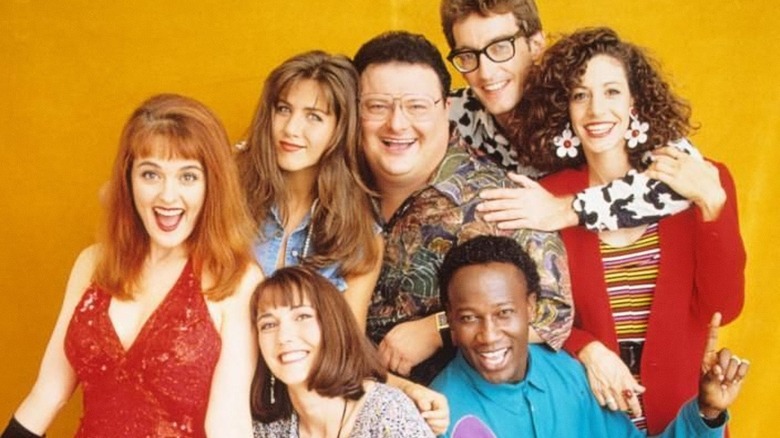
(Welcome to TV, Interrupted, a series where the /Film team remembers, eulogizes, and makes a case for the revival of TV shows we loved that were canceled far too soon.)
Comedian and actress Julie Brown (not to be confused with the "Downtown variety) began her career working the standup circuit and appearing in bit parts in films like "Any Which Way You Can" and "Bloody Birthday" before releasing her 1984 EP "Goddess in Progress" through Rhino Records, the world's best record label. The songs "Earth Girls Are Easy," "'Cause I'm a Blonde," "I Like 'Em Big and Stupid," and the (now, no longer funny) "The Homecoming Queen's Got a Gun" were all hits in novelty music circles, and Brown's career soon expanded to include TV shows and movies she would write and produce herself. Brown adapted her song "Earth Girls Are Easy" into a 1988 feature film of the same, starring Geena Davis and Jeff Goldblum, and soon thereafter entered the world of TV, making two ill-fated pilots ("The Julie Show" and "Julie Brown: The Show").
Brown always played outsize, clueless characters, often as sendups of the ultra-vapid fame culture of the late 1980s and early 1990s, frequently poking fun at beauty standards and body image; Brown was often seen making fun of supermodels and frequently wore fat suits to parlay her satires.
In 1992, Brown developed her own sketch comedy show for Fox, fittingly called "The Edge," wherein she could explore her penchant for crass satire, violent tendencies, and, and penchant for bloody, slapstick death. Did I mention the violent tendencies? Golly, was the show violent. And funny. Violently funny. This was a show where the entire cast would be killed on camera at the start of every episode.
Why The Edge Was Great
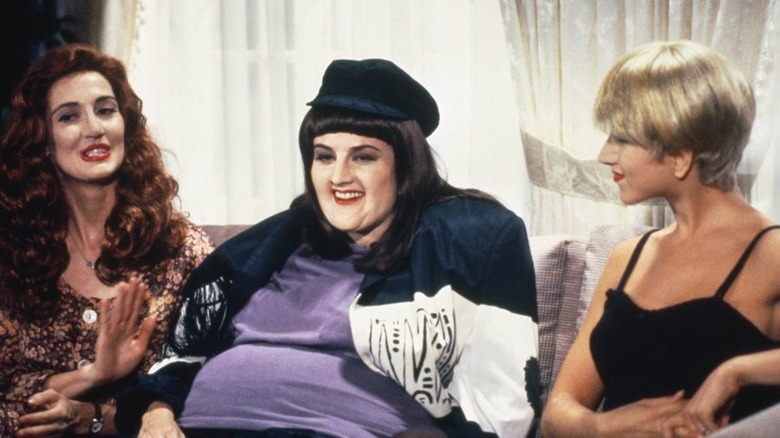
Any mention of "The Edge" in 2022 will first make mention of its cast of then up-and-comers who would go on to larger hit projects. Jennifer Aniston ("Friends") was among the main cast, as was Wayne Knight ("Seinfeld") and Tom Kenny (SpongeBob himself). Also on the main cast were Carol Rosenthal, James Stephens III, and Jill Talley. Paul Feig and Alan Ruck appeared in a few episodes, and animated bumpers in between sketches were provided by star animator Bill Plympton.
"The Edge" was sick, and that is a high compliment. Almost every single one of its sketches ended in death or violence. Buckets of blood were spilled and guns were frequently fired; one of the show's more notable segments was "Armed Family," a sitcom spoof wherein every character was disastrously trigger happy. In one of the cast-killing opening sequences, the comedians were shot up with arrows. In another, the cast was run down by a truck. In another still, an enormous blade decapitated them all in one grand swing. "The Edge" took place in a universe wherein Jennifer Aniston would incur mockery from her co-stars upon revealing that her bowling ball bag contained a nothing more than a mere bowling ball. Everyone else carries bloody severed human heads in theirs. "Come back! There's blood on it!" she shouted after them.
Brown also featured multiple send-ups of the way women's bodies were objectified by the media, and a running gag featured models in bikinis leaping on camera at the end of a sketch, accompanied by the on-screen caption "SWEEPS WEEK." What better way to bolster ratings than models in bikinis?
There is too much additional greatness to relate here. Seek clips on YouTube for more.
Why The Edge Was Canceled
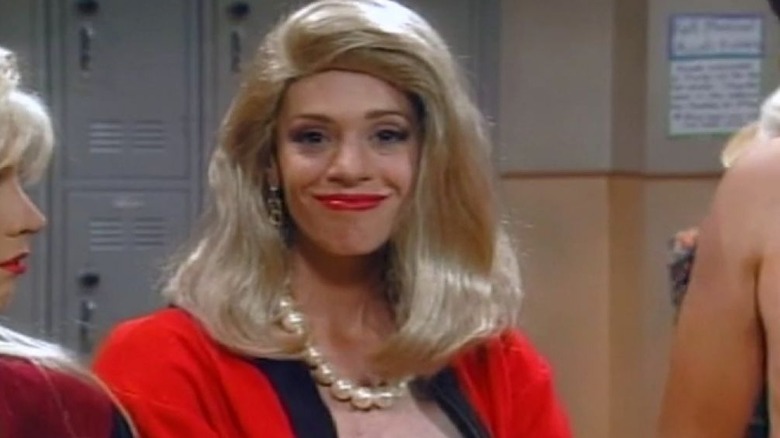
While "The Edge" garnered "respectable" ratings, it was never the runaway success of, say, "In Loving Color" or the equally dark "Kids in the Hall." It was, perhaps, too madcap for fans of dark humor, and too violent for fans of slapstick. The show had a breakneck pace, and could only be appreciated by easily amused serial killers or overcaffeinated ninth graders (I was the latter). "The Edge" was in keeping with certain humor trends at the time. Shows like "Married... with Children" and "The Simpsons" pushed mainstream comedy toward genre deconstruction and the dysfunction hidden within old sitcom tropes. "The Edge" merely pointed out that slapstick violence, when taken to an extreme, becomes even more absurd. It was a media commentary posing as a gore-soaked farce.
The show's tone was also decidedly wicked; when "The Edge" satirized a hot TV show, it pulled no punches, often pointing out the show's most glaring weaknesses openly. Indeed, Julie Brown's spoof of "Beverly Hills 90210" got "The Edge" in hot water with no one less than Aaron Spelling, the "90210" producer. On "The Edge," the character of Donna, played by Spelling's daughter Tori on "90210," frequently turned to the camera saying that she was allowed to do whatever she wanted because it's "my daddy's show." This, mixed in with scenes of the characters engaging in incest, led to Spelling demanding an apology. David Mirkin, producer on "The Edge," stood by the show's writers and was quoted in the Los Angeles Times as saying, "What's upsetting to me is it shows absolutely that Mr. Spelling has no sense of humor."
Low ratings, an angry Spelling, and a weird, weird tone led to the demise of "The Edge" after only 18 episodes.
Unfinished Business

Given the above-mentioned 1990s media ethos of deconstructionist entertainment -- heck, even "Tiny Toon Adventures" regularly broke the fourth wall -- one would assume a deconstructionist sketch comedy show like "The Edge" would have taken hold more strongly in the popular consciousness. The "old world" of TV comedy was evolving in the 1990s. Jay Leno and David Letterman had only just recently had a rivalry over who would get to host "The Tonight Show" (Leno took over the gig in March of '92), leading to discussions as to whether or not that Boomer-ready format of comedy was even worth preserving. Keenan Ivory Wayans had already pushed sketch comedy onto a new plane (seriously, why is "Saturday Night Live" still a thing?) and there was no reason why continued absurdity and self-aware violence should not have caught on within the genre.
Of course, the greatest sketch comedy shows rarely last longer than a few seasons, as each of them were products of their time. "Monty Python's Flying Circus" only lasted four seasons. "The State" also only lasted a few years. "In Living Color" lasted five. "Kids in the Hall" also lasted five years, but they have reunited incessantly. "SCTV," six years. Ditto, "Laugh-In." After five years, maybe six, any good sketch comedy show will begin to peter out. "MADtv" lost its luster pretty quickly, and "SNL" has always been 15% good sketches surrounded by filler that seems to last for hours. The notable exception to this rule is probably "You Can't Do That on Television," which last 10 years and was strong throughout.
Perhaps there wasn't a lengthy future for "The Edge," as great sketch comedy cannot last. But surely it deserved at least another year or two.
Will The Edge Ever Return?
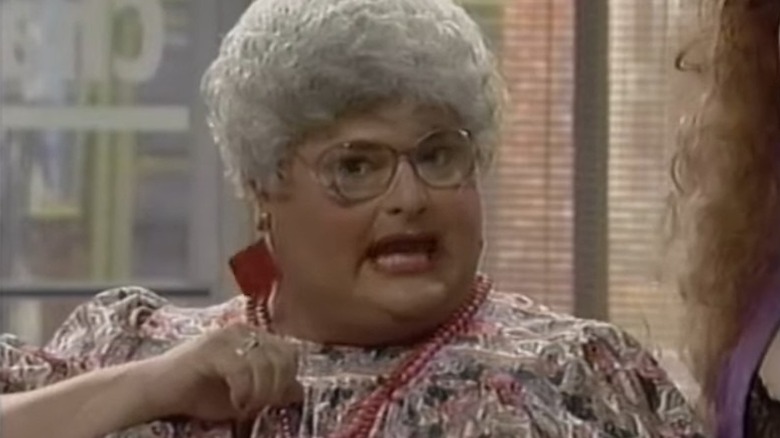
Unlike "Kids in the Hall" or "The State" or many of its contemporaries, "The Edge" never garnered much of a cult audience. Apart from its notable cast, few characters or one-liners from the show leaked into the pop consciousness, and the troupe's individual works -- at least in the cases of Knight, Aniston, and Kenny -- eclipsed whatever clout "The Edge" might have had ... if any.
The show's credited creator, Mirkin, went on to be the showrunner on "The Simpsons" in its sixth season, and is on record for having left "The Edge" over budget concerns. Mirkin's butting of heads with Spelling and leaving the show in its first season left something of a stink on it, and "The Edge" has been difficult to find ever since (it's not on any streaming services). It was only in recent years that Brown, who seemingly holds the rights to the show, began been offering DVDs through her website. Profits go straight to Brown.
I encourage you to buy the DVDs.
But in brief, there is no way in Hades that "The Edge" will return. The stars and producer all went on to more popular things in spite of "The Edge" and not necessarily because of it. But one can say categorically that it is certainly the best thing that the cast has ever done; an episode of "The Edge" will provide twice as many incredulous laughs as "Seinfeld" or "Friends." Perhaps I just tipped my hand as to my comedic tastes.
"The Edge" remains something of an obscurity and perhaps is destined to remain so for the immediate future. But one can take comfort in the fact that the right people will eventually find it, understand what it was doing, and unlock one of the finest, darkest, most violent sketch comedy shows ever made.
Read this next: 20 Underrated Rom Coms You Need To Watch
The post TV, Interrupted: The Edge was the Most Violent Sketch Comedy Show Ever Made appeared first on /Film.
How to Legally Dispose of Old Tires

Thanks to regularly scheduled garbage pickup, we’ve gotten used to the idea that if we want to throw something out, we can just pop it in trash bag or can, put it out on the curb, and on a designated day of the week, sanitation workers or waste disposal companies whisk it away.
Seagate 30 TB+ HAMR HDDs To Ship By Mid-2023

After several months, Seagate has officially revealed its intentions to launch the next-gen HDD in the middle of 2023. This announcement comes after months of advertising the development of its second-generation HDD platform that will showcase the latest heat-assisted magnetic recording (HAMR) technology and offer memory capacities of over 30 TB.
Seagate's Massive 30 TB+ HAMR HDDs Aiming Launch In Second Half of 2023
The new HAMR platform by Seagate is anticipated to increase the ability to stretch the lengths of memory capacity. And the company does not plan to stop at 30 TB. Seagate is looking towards 50 TB of storage or higher. The company explains in their roadmap that they will look at offering 30TB and above starting in 2023 but have not explained the length of time to achieve 50 TB or higher.
We are well down the development path towards launching our 30+ TB family of drives based on HAMR technology. We expect to begin customer shipments of these HAMR-based products by this time next year.
— David Mosley, chief executive of Seagate, during the company's recent earnings call.
The first generation of the HAMR memory platform has been floating to specific clients and in the Lyve storage systems for some time, but the second generation HAMR drives will be available to all, with a small caveat.
Shipments to customers of the second-gen HAMR HDDs with a capacity of 30TB or more will not be shipped in mass quantities starting in 2023. The company is expected only to send to select customers in the data center markets, pushing the availability for everyone until a later date.

Seagate's HAMR technology alters the HDD memory, affecting media, magnetic layer, reading and writing heads, controller, actuators, and several other components of a hard drive. There is speculation that creating new parts will be more challenging to produce and more expensive for clients.
HDDs with a memory capacity of 30TB and higher that use a single actuator have a unique IOPS-per-TB performance. The performance lowers as the capacity increases, which alters responsiveness and performance. Users utilizing the HDDs for standard datacenters or enterprise-level NAS systems will benefit from waiting until memory drives of a similar capacity and offering a dual-actuator architecture become more widely available.
The post Seagate 30 TB+ HAMR HDDs To Ship By Mid-2023 by Jason R. Wilson appeared first on Wccftech.
Daredevil: Born Again Disney+ Series Will Bring Back Charlie Cox As The Man Without Fear [Comic-Con]
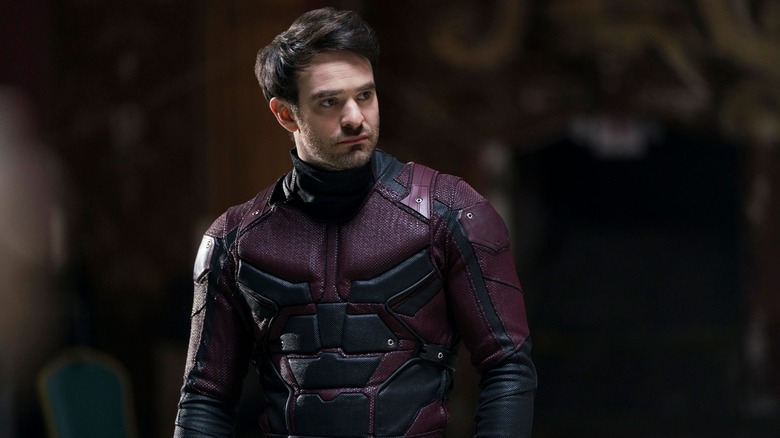
It's happening and it's official! Daredevil is coming back and, this time, he's coming to the Marvel Cinematic Universe in proper fashion. During the massive Marvel Studios presentation at San Diego Comic-Con, Marvel Studios President Kevin Feige announced "Daredevil: Born Again." The series will be a whopping 18 episodes long and will help to round out Phase 5 of the MCU.
As expected, Charlie Cox will be the MCU's Man Without Fear, with Vincent D'Onofrio returning as Kingpin. For those who may not be familiar, that "Born Again" title is extremely special as it means they are going to be adapting the Marvel Comics storyline of the same name by Frank Miller. For some context, here's a synopsis for the comic.
The definitive Daredevil tale, by industry legends Frank Miller and David Mazzucchelli! Karen Page, Matt Murdock's former lover, has traded away the Man Without Fear's secret identity for a drug fix. Now, Daredevil must find strength as the Kingpin of Crime wastes no time taking him down as low as a human can get.
A Long Time Coming
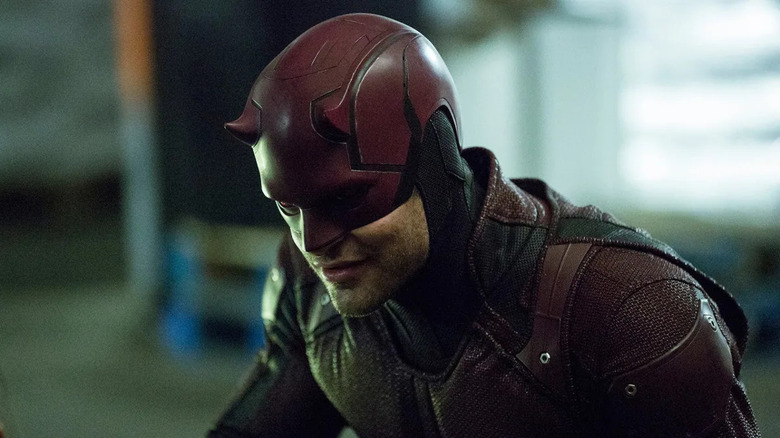
While the Marvel Netflix shows proved to be a bit of a mixed bag overall, "Daredevil" was always viewed as a highlight. The notion of casting someone else as Matt Murdock or Kingpin would have been tough to imagine as those iterations of the characters instantly became beloved. Luckily, Marvel has made a sizable commitment to this particular version of the franchise. To that end, we even got a little glimpse at Cox in the most recent "She-Hulk" trailer, which also dropped at SDCC.
As for whether or not we're going to see more of either of these characters in the movies, that remains to be seen. But it's been made explicitly clear that they are in the MCU proper and there is no longer any ambiguity.
"Daredevil: Born Again" arrives on Disney+ in spring 2024.
Read this next: The Best Movies Streaming Right Now: Malignant, A Hero, And More
The post Daredevil: Born Again Disney+ Series Will Bring Back Charlie Cox as The Man Without Fear [Comic-Con] appeared first on /Film.
Titanic Turned Kate Winslet Off Working With James Cameron
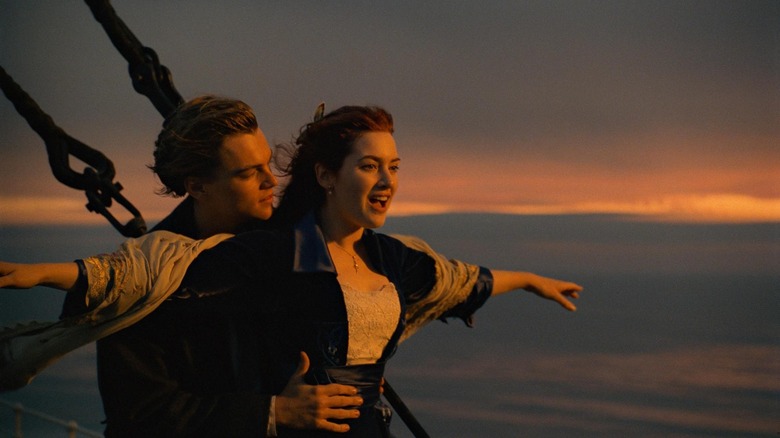
I was a heavy Titanic nerd as a teen; if you ever needed to know how many rivets held the ill-fated ship together, I was your guy. I read Walter Lord's "A Night to Remember" over and over, and I spent many hours poring over those haunting images of the wreck in Robert Ballard's "The Discovery of the Titanic." As a result, I was pretty sniffy about "Titanic" when it first hit theaters.
Like everyone else, I was wowed by the way Cameron re-staged the disaster on a massive scale, but cringed at the cheesy dialogue and Celine Dion's theme song, which was on the radio roughly every 15 minutes at the time. My main beef was that relegating the real-life passengers to the background in favor of a fictional upstairs-downstairs romance felt disrespectful to those who died.
My Titanic mania has faded over the years, so I can no longer give you the tonnage of the ship or a breakdown of survivors and victims by passenger class. As my geekery waned, my appreciation of "Titanic" increased with each viewing, to the point that I now absolutely love the film. I've come to adore its extravagance, corny script, melodrama, and even that bloody song, as a work of epic camp. Then, when the iceberg strikes, it turns into one of the best action movies ever made.
Would "Titanic" be so beloved around the world without Kate and Leo looking so swooningly fresh and beautiful at the heart of the movie? For my money, these are two of their greatest performances, wrestling so sincerely with that ridiculous dialogue and somehow selling it. The film rocketed them to global fame, with Winslet receiving an Oscar nomination. Yet, for all the success and accolades, she vowed never to work with Cameron again.
So What Happens In Titanic Again?
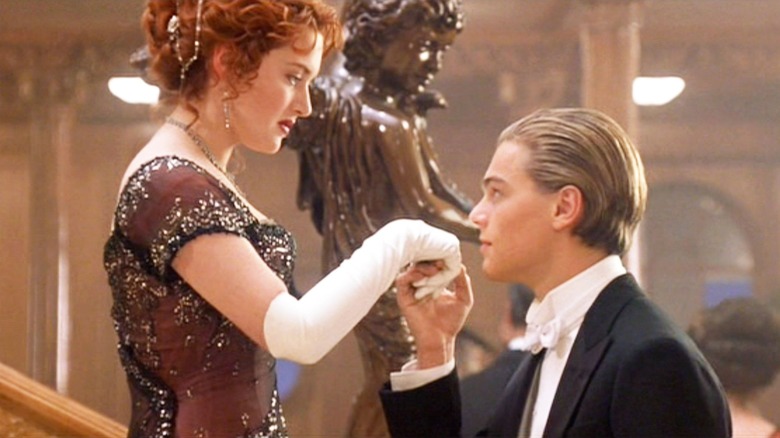
We open in the present day as oceanographer Brock Lovett (Bill Paxton) and his team are scouring the wreck of the Titanic for a fabulously huge diamond known as "The Heart of the Ocean." When their latest televised search only turns up a nude sketch of a woman wearing the stone in a necklace, they receive a call from an elderly woman claiming to be the person in the picture. They fly her out to their research vessel quick-sharp to probe her about the jewel's whereabouts, which prompts a three-hour flashback...
Now it's 1912, and the supposedly unsinkable RMS Titanic is about to set sail on her fateful maiden voyage. Penniless artist Jack Dawson (DiCaprio) wins his berth in steerage on a hand of cards, while several decks above in first class, Rose DeWitt Bukater (Winslet) settles into her luxurious staterooms with her mother and insufferable fiancé Cal Hockley (Billy Zane).
Rose is only marrying the guy to maintain her family's social status, on their uppers since her father died. As the liner heads out across the Atlantic, she is struck with despair at her situation, considering throwing herself overboard rather that wed such a monster. That's when she meets Jack, who talks her down. They become fast friends, much to the disapproval of Rose's mother and Cal.
They inevitably fall in love, and Rose resolves to disembark in New York with Jack rather than Cal. Their happiness is short-lived as the Titanic strikes an iceberg and the plight of many of the passengers becomes evident. With the ship sinking in the Atlantic without enough lifeboats and Cal on a jealous rampage, can they survive the disaster?
Cameron Went Bigger Than Ever Before On Titanic
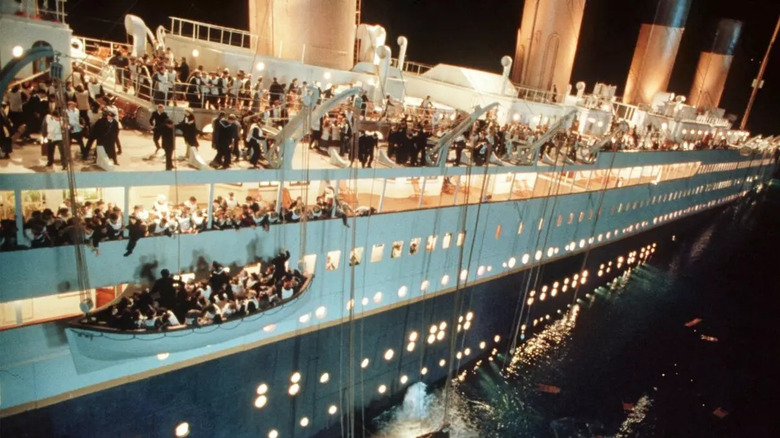
"Titanic" was the first film to hit $1 billion at the box office and racked up 11 Oscar wins, including Best Picture. Yet for all its runaway glory, success was by no means certain during production. Costs spiralled and studio executives panicked because, as always, Cameron wasn't doing anything by halves. Aside from filming at the actual wreck site, he built a 17-million gallon tank in Mexico and a scale replica of the ship to recreate the disaster.
Cameron had long developed a reputation as a punishing director to work for, and his exacting methods and explosive temper was blown up to supersized proportions on set (via The Times):
He became known as an uncompromising, hard-charging perfectionist and 300- decibel screamer, a modern-day Captain Bligh with a megaphone and walkie-talkie, swooping down into people's faces on a 162ft crane.
For his part, Cameron has always insisted that he suffers as much for his art as anybody else and that his dictatorial approach comes from a deep, burning desire to make every one of his movies the best it can possibly be. He said of the production (via Far Out):
I had dark hours on Titanic as dire as Piranha II. We missed the iceberg by that much. But I'm at my best when I'm neck-deep in ice water trying to work out how we're going to keep the lights turned on when the water hits the bulbs.
That's fair enough, but we are talking about a guy who designs his own submersibles for his hobby of exploring the bottom of the ocean. Cameron is probably happier than most people when it comes to spending several hours in a tank of water, as the testimonies of his cast and crew reflect.
Kate Winslet Almost Drowned Making Titanic
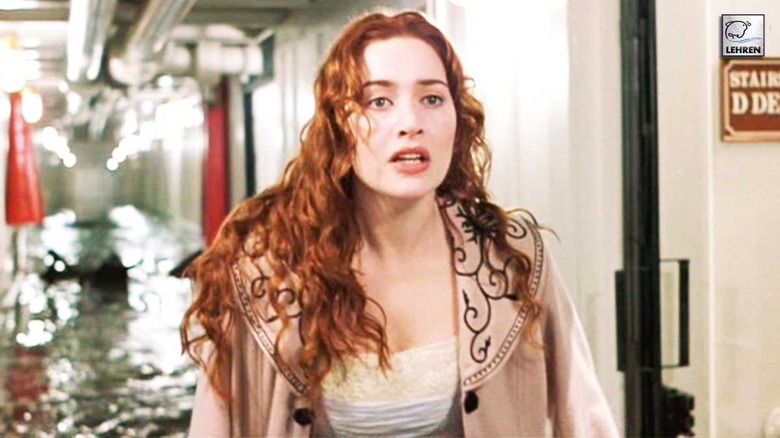
"Titanic" was a tough shoot for everyone involved, with actors and crew members suffering flu and kidney infections from spending so much time in the water. Winslet was very vocal about her experiences on the film, telling of exhausting 20-hour shifts, grueling night shoots, Cameron's notorious temper, and a few scary moments. Then 21, she told Los Angeles Times, "I chipped a small bone in my elbow, and at one point I had deep bruises all over my arms. I looked like a battered wife."
She also suffered hypothermia from prolonged periods in the water, but the most alarming moment came while shooting a scene where Winslet and DiCaprio are trying to escape a rapidly submerging corridor, only to find their path blocked by a gate. They manage to get it open in the nick of time, but Winslet's coat got caught up and she found herself underwater and fighting to set herself free. She explained:
I had to sort of shimmy out of the coat to get free... I had no breath left. I thought I'd burst. And Jim just said, "OK, let's go again." That was his attitude. I didn't want to be a wimp so I didn't complain.
While she admitted that there were times when she felt "genuinely frightened" of Cameron, she also noted that the crew bore the brunt of his temper and that she also liked and admired him. She also praised his work ethic and commitment:
Logistically it was a very tough film for him as much as anyone. By the end I was existing on about four hours' sleep a day, but Jim was existing on three.
An Offer Winslet Couldn't Refuse?
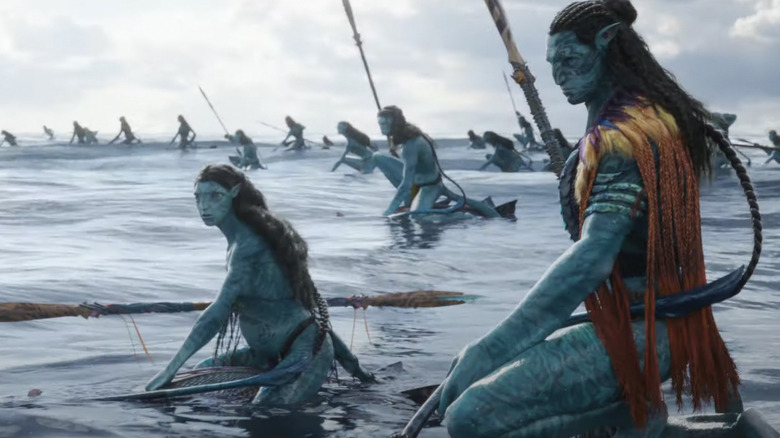
Despite the success and fame "Titanic" brought her, Winslet was typically candid when she dismissed the possibility of starring in another Cameron film (via The Guardian):
He has a temper like you wouldn't believe... You'd have to pay me a lot of money to work with Jim again.
She made a tidy $2 million for playing Rose and is rarely short of work, accolades, and significant fees these days. She was reportedly paid $650,000 per episode and won an Emmy for her role in "Mare of Easttown," so presumably Cameron allocated a decent chunk of his casting budget for "Avatar 2" to make her reconsider her stance and sign up to play Ronal, a member of the reef-dwelling Metkayina clan.
No doubt both Winslet and Cameron have mellowed with age. She's now in her mid-40s and the director is approaching 70, and she is glowing about working with Cameron again 25 years after their torrid time on "Titanic." As she told the Hollywood Reporter:
It was so wonderful to work with Jim again...Time has changed him. Jim has become a father a few more times over. He is a calmer person. Chilled. You can just feel him enjoying it more this time.
Since "Avatar 2" is a Cameron movie and the subtitle is "The Way of Water," there is obviously plenty of the wet stuff involved. Cameron always encourages extremes, and Winslet and her fellow actors trained in free-diving to prepare for their parts. Working with an instructor, she conditioned herself to the point where could hold her breath for a staggering 7 minutes and 14 seconds, crushing Tom Cruise's previous record for an on-screen breath-hold. No doubt she also thought it would come in handy after her experiences on "Titanic."
Read this next: Horror Roles That Changed Actors Forever
The post Titanic Turned Kate Winslet Off Working With James Cameron appeared first on /Film.
Guardians Of The Galaxy Vol. 3 Footage Reaction: It's The End Of The Road For The Guardians [Comic-Con]
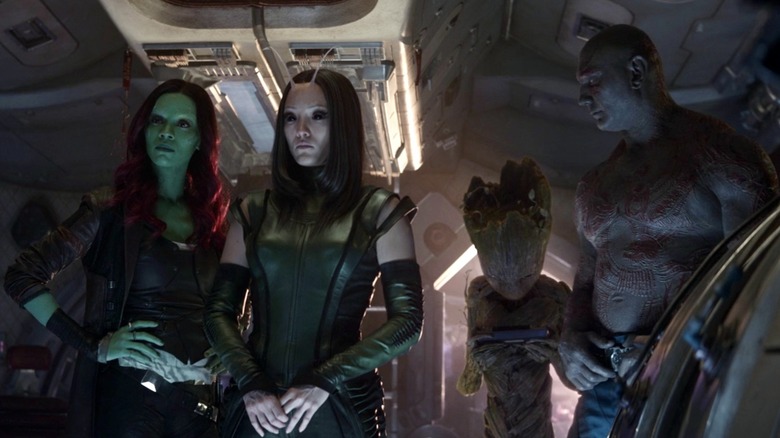
Since 2017, the Guardians of the Galaxy have been milling about the Marvel Cinematic Universe, waiting for the chance to conclude their trilogy — and now the first footage from "Guardians of the Galaxy Vol. 3" is here.
The Guardians haven't exactly been inactive the last five years, as they've had a roller coaster, Cosmic Rewind, open in Disney World, and the team has shown up onscreen in "Avengers: Infinity War" and "Avengers: Endgame," the latter of which teased further space-faring adventures with them and Thor. However, "Thor: Love and Thunder" quickly ushered them offstage this year, leaving some members of the team with barely any lines, so that their appearance almost felt like more of an extended cameo.
Writer-director James Gunn has been off in the DC Extended Universe, filming "The Suicide Squad" and "Peacemaker," but he's coming back to wrap up his Guardians trilogy for Marvel Studios after he delivers "The Guardians of the Galaxy Holiday Special" this December. Joining the characters you know and love in "Guardians of the Galaxy Vol. 3" is Will Poulter as Adam Warlock, a major comics character who looks to be an important addition to the MCU.
Marvel's return to Comic-Con, where /Film was in attendance, brought with it some early footage from "Guardians of the Galaxy Vol. 3," and we've got a description below.
Guardians Of The Galaxy Vol. 3 Footage Reaction
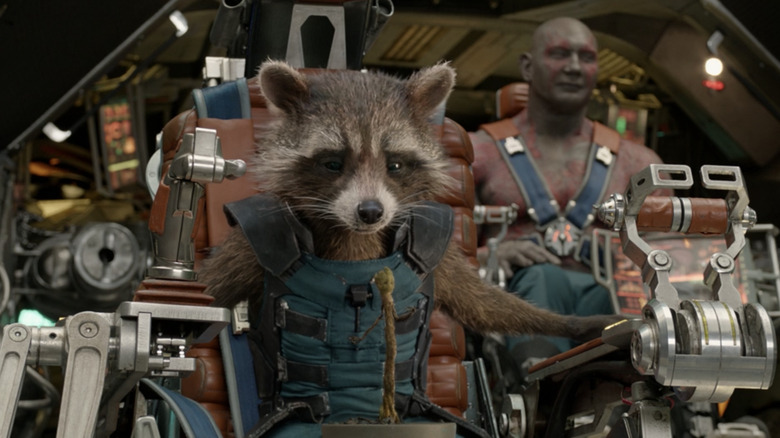
James Gunn says he knew where these characters were going from his very first pitch to Kevin Feige and the team at Marvel. "This is the end of that story," he said on the Hall H stage. "Some stories have an end. That doesn't mean everyone dies." After all, Gunn said, the Guardians may save the universe, but they also "save each other."
The footage opens with Nebula on a ship, but something has gone wrong -- the Ravagers have taken over. Peter Quill tries to tell them to stand down because they have an appointment with Gamora, who runs the Ravagers now. She's wearing all black, and looking super tough.
There's a shot of Peter Quill along on his ship, looking sad. Unfortunately for him, Gamora doesn't remember anything about the first two movies.
Then we see the Guardians in colorful spacesuits, leaping into space. Our merry band of a-holes seems to be opening a store of some kind, with Nebula helping to set up some kind of sign in a business area. It's an alien font, but it appears to be a storefront for the Guardians' services.
There's a flashback to a baby version of Rocket Raccoon (who is obviously very cute). One of the big questions this movie seems to be asking is, "Where does Rocket come from?", and James Gunn explained on stage that Rocket is "the saddest creature in the universe."
Back in modern day, they're all wearing the classic blue uniforms with red trimming from the comics. The casual gear is gone -- they look like a big uniformed team now.
After multiple years of build-up, we finally get a good look at Will Poulter's Adam Warlock, who has gold skin, and meanwhile, Groot is full grown again after spending the past few movies in various stages of adolescence. Now he's bulky, muscular, and very tall -- even more broad than he did in his original adult form. Here, he's more akin to a creature that would be voiced by Vin Diesel.
There's a shot of the Guardians in those colorful suits, bounding across an alien planet. Peter tries to open up to Gamora, but he's talking to her on an open channel and the other Guardians mock him. (A-holes, indeed.) The gang ruthlessly making fun of Quill is one of the few moments that focuses on Gunn's signature sense of humor.
Overall, this is really lovely to look at. The moment where they're all wearing different-colored space suits, leaping from an airlock and into a desolate asteroid/planetoid looks genuinely beautiful. There was a big focus on emotion in this footage, with a tinge of melancholy. It's clear this is the end of the line for this iteration of the Guardians of the Galaxy: There's a sense of finality here that hasn't been present in any other Guardians material thus far.
"Guardians of the Galaxy Vol. 3" is in theaters on May 5, 2023.
Read this next: 11 Marvel Comics Villains We Really Want To See In The MCU
The post Guardians of the Galaxy Vol. 3 Footage Reaction: It's the End of the Road for The Guardians [Comic-Con] appeared first on /Film.
Phoenix Point - Complete Edition available
Black Adam Trailer: The Rock Meets The Justice Society Of America
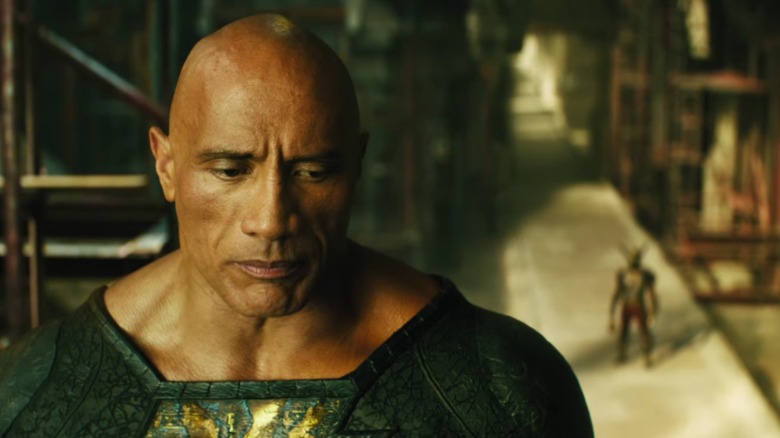
Comic-Con continues in sunny San Diego, and among all the weekend's big reveals and breaking news, we've just caught the newest trailer for "Black Adam." DC's Dwayne Johnson-led comic book movie may not have all eyes on it this weekend, since fans have already seen plenty of footage of the upcoming movie by now, but the Warner Bros. team still managed to pull together something new and exclusive for the crowds at SDCC.
"You can be the destroyer of this world or you can be its savior," Pierce Brosnan's Doctor Fate said in the first full trailer for "Black Adam," and that's a pretty good summary of the movie's marketing so far. In DC comic books, Black Adam is typically written as a villain, though more recent versions of the character have reimagined him as an antihero. So far, the "Black Adam" footage has revealed a version of the character who's both empathetic (his son died!) and formidable (he's angry, and facing off against helicopters and missiles!). Overall, the superpowered former slave mostly looks like a man on a mission in a time that's not his own. Take a look at the latest "Black Adam" trailer below.
Black Adam Electrifies Comic Con
Johnson has been attached to play Black Adam for years, with the character introduction initially planned for 2019's "Shazam!" Yet this weekend marks the first time the wrestler-turned-actor has made an appearance at the annual festival, which was canceled for two years in the wake of the COVID-19 pandemic. Johnson announced his appearance with an enthusiastic Instagram reel, declaring, "Finally, the Man in Black comes home to Comic Con!"
Johnson revealed that the Comic-Con panel also includes the rest of the "Black Adam" cast, specifically the members of the Justice Society of America, including Noah Centineo, Quintessa Swindell, and Aldis Hodge. The JSA has also popped up in earlier "Black Adam" promos, but has yet to get full introductions.
Centineo, who gained fame after playing heartthrob Peter Kavinsky in Netflix's "To All The Boys I've Loved Before" film series, will be playing Albert Rothstein, AKA Atom Smasher, who can change his molecular structure. Swindell, who has appeared in "Trinkets" and the latest season of "In Treatment," is playing Cyclone, who can control the wind. Hodge, who currently stars in Showtime's crime drama "City on a Hill," will play Hawkman, the JSA's leader who has the power of flight thanks to a special pair of wings.
"Black Adam" hits theaters October 21, 2022.
Read this next: The 19 Greatest Movie Couples Of All Time Ranked
The post Black Adam Trailer: The Rock Meets the Justice Society of America appeared first on /Film.
The Shazam Family Are Going Through 'Growing Pains' In Fury Of The Gods [Comic-Con]
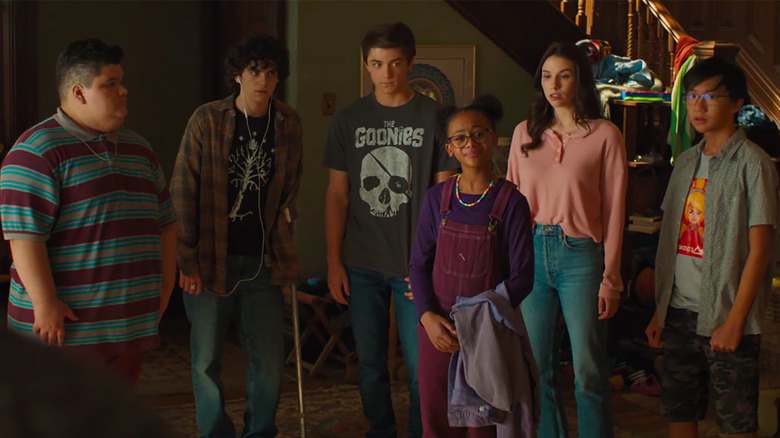
Everyone in the world knows that growing pains are a part of life. It's not always the fun kind featuring Canadian national treasure Alan Thicke either. But like the classic ABC sitcom shows us, they are a little easier to manage with some help from your family. And in the upcoming DC Extended Universe movie "Shazam!: Fury of the Gods," young Billy Batson (Asher Angel) is lucky enough to have a family of superheroes to have his back. However, it sounds like that comes with its own set of problems as well.
During the Warner Bros panel at this year's San Diego Comic-Con, stars Asher Angel, Zachary Levi, Jack Dylan Grazer, Lucy Liu, Adam Brody, Faithe Herman, Meagan Good, Grace Fulton, Ian Chen, Ross Butler, Jovan Armand, D.J. Cotrona, Marta Milans, Rachel Zegler, and Helen Mirren (whew!) all took the stage at Hall H to debut the latest trailer for the upcoming sequel to the fan favorite 2019 comic book adventure "Shazam!" But before that exciting reveal, Levi talked a little bit about Billy and his siblings after the events of the first movie and the sort of growing pains they'll be experiencing.
All In The Shazamily
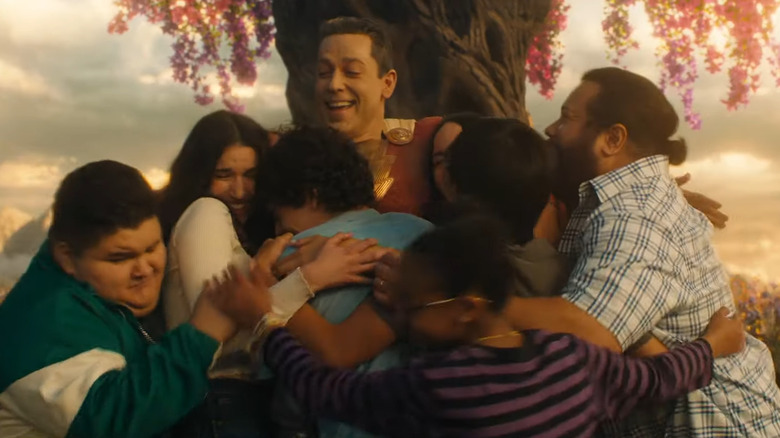
All imbued with the powers of a mystical wizard, the Shazam Family (or the Shazamily, as they called them during the panel) are doing their best to be the best heroes they can be. Although, at the end of the day, they're all still growing kids that make mistakes while trying to figure out who they really are. And according to Levi, we'll be along for the ride as we see how those two sides of this super team reconcile with each other in this movie.
"We got this really cool look into all the kids getting their superpowers at the end of the last movie, which was so fun. Now, it's a couple years on and we've all been flying around, doing various missions, and trying to help the city of Philadelphia and the world at large. But again, we're all still kinda learning how to do that. Lots of growing pains, not just in our own powers, but also figuring out or own identity between the regular self and super self. Super family comes with super problems. Super drama! There's family tiffs and things and we're all just trying to figure it out. It adds an interesting bedrock of reality that you can connect to as a human being because we're superheroes, but we're human beings too."
It's always good when larger than life characters show their human side, so there's plenty for the audience to relate to when it comes to the Shazam Family. It'll just be a bit more complicated for them to find balance in their lives when Mirren and Liu's baddies get in their way. But that'll make it all the more fun when we finally see this highly anticipated sequel later this year.
"Shazam! Fury of the Gods" premieres in theaters on December 21, 2022.
Read this next: The 15 Most Anticipated Comic Book Movies And Shows Of 2022, Ranked
The post The Shazam Family Are Going Through 'Growing Pains' in Fury of the Gods [Comic-Con] appeared first on /Film.
The commentary after this passenger landed a plane with a passed-out pilot is superb

The junior aviator clearly knew what was up with his pilot's medical emergency and found a fantastic way to drop the bomb during his interview. I hope the pilot loses his license, and the young man gets his wings.
**Sadly, or just enjoyably, this is an after-the-fact edit I would have loved to have been real. — Read the rest
[LINUX ONLY] You can play DRM-free version of Total War: Warhammer 3, an uncracked Denuvo game
I was just browsing some Linux game piracy sites, and noticed that Total War: WARHAMMER III 1.2.1 Build 14425.2601296 is available to download.
While the Windows version of the game has Denuvo, and to my knowledge, is currently uncracked, the game has been ported (really, repackaged) for Linux by Feral Interactive, a Linux porting studio, and does not have Denuvo.
Even the multiplayer works, but with a pretty big caveat that it's only Linux to Linux multiplayer.
If you're keen to play it, you can just install Linux and have at it.
If you don't want to permanently install Linux, there is an option to run it with native performance, which is completely safe and cannot damage your Windows installation.
What you'll essentially do is install Linux into a VM, and then boot it on physical hardware with physical hardware performance.
This is not a step-by-step detailed tutorial. Tiny bit of Linux and VM knowledge will be required (or ability to Google things/read few lines of documentation).
- Download VirtualBox for Windows hosts. Install Linux into a VHD file (Ubuntu is fine, but any distro will work).
Additionally, make sure that your VHD file has fixed size (it is not dynamic). This is important, because dynamic is default, which won't boot for you. - Once installed, run the VM once and install vtoyboot (it's a script that prepares your Linux install for the next step).
- Install Ventoy* to a spare USB flash drive/SSD. Speed matters here because you'll be booting your OS from it. Make sure it's at least USB 3.0.
- Move the VM image to the Ventoy device and rename the file to have the .vtoy extension.
- Boot from USB, select the Ventoy device, and then select your Linux VM.
It will now boot on your physical hardware, with access to your graphics card, but without modifying your underlying Windows installation. Once you're done, just shut down the Linux OS, unplug the ventoy device and there will be no trace left on your hard-drive. - If you have Nvidia card, you might have to install the drivers within your Linux distro.
- Download the game and play it.
[link] [comments]
Two Senators Propose Ban On Data Caps, Blasting ISPs For 'Predatory' Limits
Read more of this story at Slashdot.
8 Anime like Dorohedoro, the gory fantasy-action series from MAPPA
Here are 8 excellent anime series that you can check out if you loved the gory fantasy-action series from Studio MAPPA, Dorohedoro.
Dorohedoro is a truly outstanding, one-of-a-kind series that is certainly firmly placed in our Top-10 favourite anime of all time.
With an intriguing story, iconic characters and some of the best world-building in recent memory, the Studio MAPPA-developed series became an instant classic when it made its global debut back in December 2020.
If you have just finished watching Dorohedoro and want to find some other similarly-themed series from within the same genre, look no further than these 8 shows to fill the Caiman-shaped ‘Hole’ that has been left.
- RECOMMENDATIONS: 6 anime like Angel Beats, the classic supernatural school series
Kaiman from Dorohedoro for funsies
— dai (@insomniac_devil) July 18, 2022
One of my favorite anime ever.
[ #dorohedoro #dorohedorofanart #dorohedoromanga #dorohedorokaiman #kaiman #dorohedoroanime #lizardface #myart #fanart ] pic.twitter.com/4F9RhPIGSI
Tokyo Ghoul (2014)
An iconic and controversial anime series, Tokyo Ghoul features all of the fantasy gore that Dorohedoro fans enjoy; with a score of 7.79/10 on MyAnimeList with over 1.6 million reviews.
The Tokyo Ghoul anime is available on Amazon Prime Video and Hulu, with the sequel seasons also available on Netflix and Crunchyroll in selected territories.
“Tokyo lives in fear of creatures called Ghouls. By day, they live as ordinary humans, but by night, they become flesh-eating monsters. When a young man becomes the first Ghoul-human half breed, he must learn to harness his deadly, newfound powers.” – Tokyo Ghoul, via Amazon Prime Video.
Dororo (2019)
Also from Studio MAPPA, Dororo is a personal favourite for us with an incredible narrative and action scenes; with a score of 8.23/10 on MAL with 528,000 reviews.
The Dororo anime series is available to stream exclusively on Amazon Prime Video.
“In Japan’s Warring States period, Lord Daigo Kagemitsu makes a pact with 12 demons, exchanging his unborn son for the prosperity of his lands. The child is born malformed and is set adrift in a river, while Kagemitsu’s lands thrive as promised. Years later, young thief Dororo encounters the mysterious “Hyakkimaru”, a boy whose arms are blades and whose visionless eyes seem able to see monsters.” – Dororo, via Amazon Prime Video.
No Guns Life (2019)
This series is more science fiction-based than fantasy, but is certainly an anime that features a lot of the same themes as Dorohedoro; with a score of 6.86/10 on MAL with 68,000 reviews.
The No Guns Life anime series is available through Crunchyroll and Funimation.
“The technology to create powerful cyborg soldiers has been released for public use by the Berühren Corporation, those outfitted with robotic parts are known as the Extended. Juuzou Inui, one such Extended, was created as a soldier and has no memories of his former life. But now, after the war, he runs a business that takes care of Extended-related incidents around the city.
Rumours of a renegade Extended that kidnapped a child reach his ears; lo and behold, as Juuzo returns to his office, a giant robotic man with a boy on his back crashes in, asking for help. While Juuzou could just turn the guy in and be done with it, something about this situation is too fishy to ignore.” – No Guns Life, via MyAnimeList.
Terra Formars (2014)
Another sci-fi-based action-comedy gore anime, this time from Liden Films; with a score of 7.01/10 on MAL with 109,000 reviews.
The Terra Formars (also labelled as Terraformars) anime is available to stream on Crunchyroll.
“With Earth becoming increasingly overpopulated, an ambitious plan has been put into place to terraform Mars using mould and cockroaches. Nearly 500 years after the plan, a mission to Mars, Annex 1, is under way to accomplish crucial research into the Virus currently plaguing mankind with the crew members who’ve been injected with various DNA of life on Earth in order to combat the Terraformars, giant humanoid cockroaches.” – Terra Formars, via Crunchyroll.
- NEW CHARACTERS: Chainsaw Man Part 2 introduces us to Mitaka, the War Devil
Blood Lad (2013)
A remarkably underrated anime series, Blood Lad is from Brain’s Base Studio and features supernatural monsters, delinquents and all types of mythology; with a score of 7.27/10 on MAL with 338,000 reviews.
The Blood Lad anime is available to stream via Crunchyroll.
“Staz is one of the toughest vampires in the demon world. But unlike his ancestors, he finds being a vampire to be a serious pain in the ass and prefers to spend his time watching anime and playing video games instead. When a Japanese girl named Fuyumi wanders into his territory, Staz cannot hide his excitement at finally meeting a living human from his favorite culture.” – Blood Lad, via Crunchyroll.
Berserk (2016)
Arguably the most infamous series on this list, Berserk’s anime adaptation was met with significant criticism because of just how good the original manga series was. That being said, the anime is still an enjoyable follow-on if you have just finished Dorohedoro; with a MAL score of 6.3/10 with 160,000 reviews.
The Berserk anime series is available to stream on Crunchyroll and Apple TV.
“Spurred by the flame raging in his heart, the Black Swordsman Guts continues his seemingly endless quest for revenge. Standing in his path are heinous outlaws, delusional evil spirits, and a devout child of god. Even as it chips away at his life, Guts continues to fight his enemies, who wield repulsive and inhumane power, with nary but his body and sword—his strength as a human. What lies at the end of his travels? The answer is shrouded in the “night.” Strain your eyes and stare into the dark!” – Berserk, via Crunchyroll.
Hellsing: Ultimate (2012)
A reboot of the classic 2001 series, Hellsing: Ultimate is arguably one of the best action horror series of the last decade; with a score of 8.36/10 on MyAnimeList with 433,000 reviews.
The Hellsing: Ultimate anime series is available through Funimation and Netflix.
“There exist creatures of darkness and evil that plague the night, devouring any human unfortunate enough to be caught in their grasp. On the other side is Hellsing, an organization dedicated to destroying these supernatural forces that threaten the very existence of humanity. At its head is Integra Fairbrook Wingates Hellsing, who commands a powerful military and spends her life fighting the undead.
Integra’s vast army, however, pales in comparison with her ultimate weapon: the vampire Alucard, who works against his own kind as an exterminator for Hellsing. With his new vampire servant, Seras Victoria, at his side, Alucard must battle not only monsters, but all those who stand to oppose Hellsing, be they in the guise of good or evil.” Hellsing: Ultimate, via MAL.
Deadman Wonderland (2011)
Whilst featuring a vastly different setting than Dorohedoro, if you want action-comedy and a hell-of-a-lot of gory images, Deadman Wonderland is for you; with a MAL score of 7.17/10 with 638,000 reviews.
The Deadman Wonderland anime is available to stream through Funimation, Crunchyroll and Apple TV – it also has one of the best OP’s ever.
“It looked like it would be a normal day for Ganta Igarashi and his classmates—they were preparing to go on a class field trip to a certain prison amusement park called Deadman Wonderland, where the convicts perform dangerous acts for the onlookers’ amusement. However, Ganta’s life is quickly turned upside down when his whole class gets massacred by a mysterious man in red. Framed for the incident and sentenced to death, Ganta is sent to the very jail he was supposed to visit. But Ganta’s nightmare is only just beginning.” – Deadman Wonderland, via MAL.
By Tom Llewellyn – tom.llewellyn@grv.media
The post 8 Anime like Dorohedoro, the gory fantasy-action series from MAPPA appeared first on ForeverGeek.
What If...? Director Reacts To Captain Carter's Death In Multiverse Of Madness [Comic-Con]
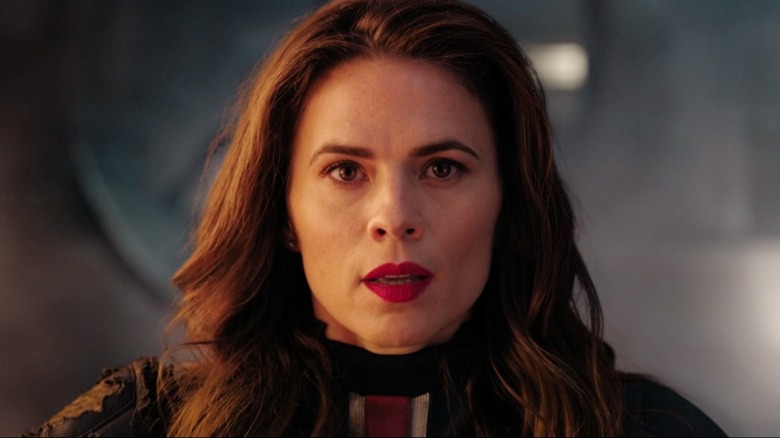
Before "Doctor Strange in the Multiverse of Madness" debuted, fans speculated that the MCU's first foray into the multiverse would be a chance to cover some ground previously tread in the pages of Marvel Comics, exploring variations of pre-existing characters and the alternate realities they populate. It turned out that the Sam Raimi-directed flick had something much more shocking and less crowd-pleasing up its sleeve: Introducing some of those long-awaited variations, but then killing them off pretty much instantly.
In one of the film's most epic but polarizing scenes, Wanda Maximoff (Elizabeth Olsen) is introduced to the Illuminati, a team of Avengers-like heroes on Earth-838 led by Professor Xavier (Patrick Stewart). It's seemingly a moment of triumph for MCU fans, introducing an impressive line-up of cameos and surprise reveals that includes John Krasinski's Reed Richards, Hayley Atwell's Captain Carter, and more. Then Scarlet Witch slaughters them all. In really creative and visually wild ways.
Luckily, this wasn't actually the first time Peggy Carter got to take up her own version of the Captain America shield: She also appears in Marvel's alternate timeline animated series "What If...?" Today at San Diego Comic-Con, the team behind "What If...?" appeared during the Marvel Animation panel and weighed in on Peggy's surprise live-action multiverse appearance. Panelists included Ryan Meinerding, head of visual development at Marvel Studios, A.C. Bradley, who created "What If...?", and Bryan Andrews, who directed the series.
The Other Carter Would've Won
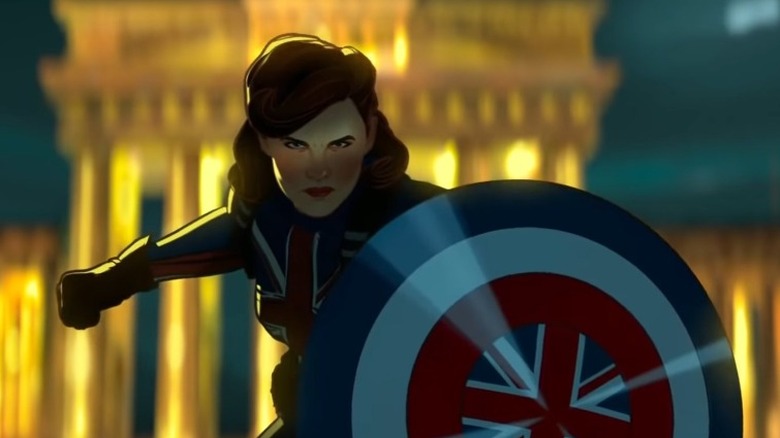
During the panel, someone asked the group what it was like to see Captain Carter come alive in a live-action MCU film, and Meinerding revealed that he thought Atwell's cameo was "pretty awesome." After asking the audience how they felt about the Captain Carter appearance and getting cheers in response, the exec had only positive things to say about the actor playing the superhero:
"Hayley Atwell's amazing. We love the fact that she's able to come back to our show, for the first season and also for the second season. She loves the character, she is the character. Seeing her in live-action was incredible. But I think it's also fun to point out that that's not our Captain Carter, that's some other variant version."
This led to some playful smack talk from the "What If...?" team, as Andrews added, "Our Captain Carter would not have gone out like that." It's probably true: In the show's first episode, viewers saw an alternate timeline in which Peggy took the supersoldier serum instead of Steve Rogers, leading to her becoming a major hero and ultimately going 70 years into the future just like her counterpart. While season 2 of the anthology series hasn't debuted yet, it's pretty clear that "Doctor Strange in the Multiverse of Madness" let Scarlet Witch harness a hero-killing power most other villains haven't gotten because the infinite nature of the multiverse meant these deaths weren't a huge deal in the long run.
Still, Andrews and Meinerding are pretty clear about which Peggy holds the power: "She would have kicked Wanda's **s," Andrews told the crowd, to which Meinerding added, "It would have been her movie. 'Peggy Carter in the Multiverse of Madness.'" Hey, I'd watch that.
Read this next: The Most Brutal Moments In The MCU Ranked
The post What If...? Director Reacts to Captain Carter's Death in Multiverse of Madness [Comic-Con] appeared first on /Film.
The Longest You Should Ever Stay at Your Job, According to Career Experts

Whatever you think of the so-called “Great Resignation”—a trend some believe actually started well before the pandemic, and others think doesn’t actually exist—many working people are currently planning to make a career change. What’s more, according to a recent Bloomberg article, this is a smart move, as some experts…
Discworld on Page and Screen, Part 1: Serious Comedy
One American writer said to me, “Your books will never sell in America because you can’t hear the elves sing. Americans go in for fantasy books where you can hear the elves sing.”
I would like that put on my gravestone: “At least you can say that in Pratchett’s books, the bloody elves never sang!”
— Terry Pratchett
Two arguments are commonly trotted out for the genre literature of the fantastic as actually or potentially something more than mere escapism. One, which applies only to the science-fiction side of the science-fiction/fantasy divide, claims that it can be a form of useful social prognostication. By observing the trends of the current day, the writer can extrapolate where we are likely to end up in the future and present it vividly on the page, whether as a prophecy or a warning. Granted, science fiction’s record of prediction is not particularly good; the writers of just a handful of decades ago almost all believed we would have settled Mars by now, while vanishingly few of them imagined anything like the modern Internet. Still, if you believe that a society’s hopes and fears for the future say a lot about its present, there is a certain sociological value even in the failed prognostications. (Indeed, the academic critic Farah Mendlesohn goes so far as the claim that much classic science fiction is “a sense of wonder combined with [a] presentism” which only masquerades as futurism.)
But it’s the other argument for fantastic literature’s enduring worth that I find most convincing: by transporting some of our most fraught current problems and conflicts into another, less familiar context, we can examine them in a fresh light. Many of us have thought at one time or another how weird our ceaselessly squabbling planet must look to any aliens who happen to stumble across it, what with all the trivialities we continue to fight and kill one another over and the looming existential threats we continue to leave woefully under-addressed. Not only science-fiction but also fantasy literature can literally or figuratively put us in the shoes of those aliens (assuming they wear shoes), allowing us to examine ideas and values with fresh eyes, less cultural baggage, and less of a knee-jerk response.
From the mid-1980s until the mid-2010s, the writer who made perhaps the most consistent case of all for fantasy literature as a laboratory of ideas that are eminently relevant to the real world was Terry Pratchett. And if that didn’t do it for you — well, he really was quite funny to boot.
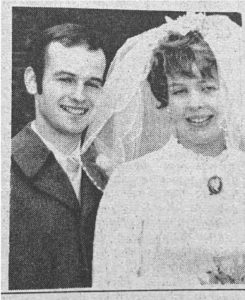
Terry and Lyn Pratchett on their wedding day in 1968. On their honeymoon, Terry would grow the beard which he would sport for the rest of his life.
Terence David John Pratchett was born on April 28, 1948, in a rural village in Buckinghamshire, England. The only child of an auto mechanic and a secretary, he grew up in a house with no indoor toilet, no hot water, and no electricity. But a less economically advantaged upbringing does not automatically mean a bad one: young Terry spent his days rambling over the same green and pleasant English landscapes that had inspired J.R.R. Tolkien’s Shire, while in the evenings he read books by the light of an oil lamp. Amidst it all, he absorbed his parent’s commonsense belief in what the British call “common decency.” He was not a member of the social class that typically went to university, and this was never regarded as a serious option for him by his teachers or his parents even when he showed an unusual talent for reading and writing. Instead he walked into the office of his local newspaper at the age of seventeen and asked to become an apprentice journalist.
And so he embarked on what his peers and his betters would have considered a perfectly respectable if not quite exciting life for one of his social station. He spent a decade and a half working as a small-town beat reporter, columnist, and editor, before switching to a less demanding job with the civil service, as a press officer for the Central Electricity Generating Board. Betwixt and between his professional accomplishments, he married his first-ever girlfriend before he turned 21, fathered a daughter with her, and lived with his family in a tidy little cottage no better nor worse than a thousand others in its corner of England.
He had just one obvious eccentricity: he loved science-fiction and especially fantasy literature, and wrote some of it himself on and off. By 1982, he had published three competent if derivative novels, in small print runs with the help of a friend with the requisite connections. Yet his closest brush with real literary fame remained the letter he had received from J.R.R. Tolkien back in 1968, in response to a piece of fan mail he had sent to the aging Oxford don.
By this point, fantasy literature had well and truly come into its own, thanks to the ongoing popularity of Tolkien and an odd new tabletop game called Dungeons & Dragons that was reaching Britain from American shores. Bookstore shelves were filling up with fat, multi-volume epics from other authors like Terry Brooks and Raymond E. Feist, who were all straining so hard to be Tolkien that one could almost hear them huffing and puffing in the background as one turned the pages. But Terry Pratchett, despite loving Tolkien so much himself that he claimed to have read The Lord of the Rings at least once per year ever since discovering it at the age of thirteen, wasn’t at all sure that such slavish imitation was the best form of flattery. He decided to write a book making fun of the trend.
To be sure, it wasn’t the highest-hanging of fruit as targets of satire went; these ponderous, interminable, oh-so-serious tomes could almost be read as parodies of Tolkien already, albeit inadvertent ones. Nor was Pratchett the first writer to have the idea; as early as 1969, when “Frodo Lives!” could be found emblazoned on the walls of the Boston subway alongside “Clapton is God!”, a pair of Harvard students had published a satire of the counterculture’s favorite fantasist called Bored of the Rings. But thankfully, Pratchett had a cleverer approach in mind than their frat-boy slapstick.
The germ of it dated back to 1978, and a column he had written poking gentle fun at the Star Wars craze. His long experience as a reporter had taught him that the proverbial little people of our own or, presumably, any other world are more exercised by mundane concerns than epic adventure. Applying this lesson to Star Wars, he offered up a science-fictional take on the banality of evil, in the form of the chief personnel officer on the Death Star, fielding complaints about the lousy coffee in the canteen, parrying worries over all those droids that were taking so many human Stormtroopers’ jobs.
Now, taking the same approach over to a world of epic fantasy, Pratchett considered what the little people there would be doing while the heroes were prattling on about Courage and Sacrifice and all the rest of that rot. The star of this “realist fantasy” — a term invented by Pratchett’s biographer Marc Burrows — would be an inept wizard named Rincewind, a perpetual graduate student at a school of magic called Unseen University. His greatest talent would be that of shirking danger and, when push came to shove, simply running away as fast as his knobby-kneed little legs could carry him. For, as Burrows writes, “when faced with violence and the threat of death, most people do not throw themselves honourably into the fray: they get the hell out of there. Rincewind is the very distillation of Pratchett’s central premise of treating a fantasy world literally.”
The fantasy world in question is, as Pratchett wrote at the beginning of the book and then proceeded to spend the next 30 years patiently repeating at the beginning of every interview he gave to the mainstream media, a flat disc borne on the backs of four giant elephants, who in turn stand on the back of a giant turtle swimming through the outer space of “a distant and secondhand set of dimensions, in an astral plane that was never meant to fly”; the premise displays Pratchett’s lifelong interest in astronomy and Hindu cosmology, as well as his love of dreadful puns. The chronically exasperated Rincewind and his unlikely companion, a naïve tourist named Twoflower whose insatiable curiosity causes him to run toward every danger from which Rincewind wants to run away, spend the book traveling across the Discworld and getting caught up in a series of comic misadventures that expose countless inviolate fantasy clichés to the cold, harsh light of real-world logic. At the time, Pratchett seems to have seen the book he called The Colour of Magic as little more than a palate cleanser between more substantial ones. The cliffhanger ending was just another concession to the genre he was lampooning; maybe he’d actually write a sequel someday, maybe he wouldn’t.
The Colour of Magic was published in November of 1983, in a British print run of just 506 copies, a testament to its publisher’s low expectations. Nothing happened right away to prove they were mistaken; the books languished on shelves for months. But then Pratchett had the stroke of luck which every budding superstar author needs. Some years ago now, the BBC had broadcast a radio serial by one Douglas Adams, a comedic send-up of science fiction that was similar in spirit to what Pratchett was now doing for (or to) the fantasy genre. Adams’s The Hitchhiker’s Guide to the Galaxy had gone on to become a very hot property indeed, spawning three internationally bestselling novels to date along with record albums, a BBC television series, and, soon, a hit computer game. In light of all this, the BBC decided to give The Colour of Magic a try over the airwaves. Between June 27 and July 10, 1984, BBC Radio 4 broadcast an abridged reading of the book by Nigel Hawthorne, one of the stars of the hugely popular television sitcom Yes, Minister. The programs received a very good response, putting Terry Pratchett’s name on the lips of everyday Britons for the first time ever. Just like that, things started to happen. In January of 1985, Corgi, a British division of Bantam Books, published The Colour of Magic in paperback, with an initial print run of no less than 26,000 copies. A second print run was needed well before the end of the year. Discworld was off and running.
With his fiction receiving widespread attention for the first time ever, Pratchett needed little encouragement to write that sequel to The Colour of Magic now rather than later. The Light Fantastic, which was published in June of 1986, was largely more of the same, notable mostly for having a slightly more focused plot and for giving prominent place to the character of Death — you know, the skeleton dressed all in black, with the scythe and so on. Belying his terrifying appearance, Death’s Discworld persona is that of an overworked, sometimes irascible, but basically well-meaning bureaucratic functionary. In time, he became arguably the most beloved of all Pratchett’s recurring characters. Many Discworld fans, facing the last days of a loved one or even their own final exit, have found surprising comfort in the seven-foot-tall, cat-loving apparition who brings peace with him rather than pain or judgment. He was an early sign that there might be something more to Discworld than just a succession of clever gags.
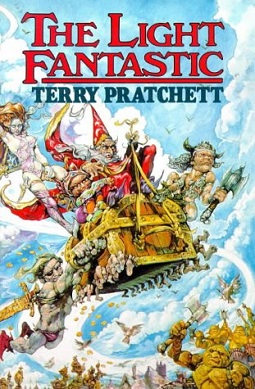
Pratchett was very fortunate to connect with an artist named Josh Kirby, whose colorful, winsome, but often subtly subversive covers became the indelible look of Discworld, impossible to separate in the minds of most fans from the words on the page.
Still, it wasn’t entirely unreasonable even at this stage to see Pratchett as an author trying his derivative darnedest to be fantasy fiction’s answer to Douglas Adams. It hadn’t helped his cause when, in a couple of unguarded early interviews, he had admitted that he had been reading the Hitchhiker’s books at the same time he was writing The Colour of Magic. Now, though, he was bristling at the comparison more and more. Adams’s works, he claimed with some truth, were archer, colder, and crueler than his own humor; Adams laughed at his characters, while Pratchett laughed with them at the absurdity of the universe.
Whether it was written in response to the accusations of unoriginality or was just a natural progression, the next book in the Discworld series made the argument that Pratchett was nothing more than a second-rate Douglas Adams untenable. That said, the leap Pratchett made with Equal Rites, the third Discworld novel, was in some ways a fairly obvious one. He was already mining humor from portraying a world of heroic fantasy in a “realistic” way, imagining the experience of the characters there who weren’t larger-than-life heroes on epic quests, and showing how even the fantastic becomes by definition mundane as soon as it becomes the stuff of everyday life. (If you doubt this truism, just look at the technological wonders all around us today which would have seemed almost like magic 30 years ago, but to which we hardly give a thought…) From here, it was a relatively short leap to begin using Discworld as a philosophical laboratory to address the questions and problems with which our own mundane societies are grappling. And yet, short leap though it may have been, it was an audacious one nonetheless. “I want to get away from the idea that I’m automatically sending fantasy up,” Pratchett would say a few years later. “What I’m concerned about now is sending up ideas, ways of looking at the world, people’s expectations.”
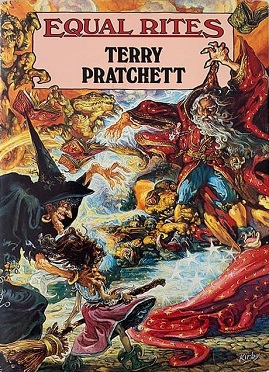
The phallic wand the female protagonist of Equal Rites is carrying as she claims powers usually reserved for men is a fine example of Josh Kirby’s subversive edge. Pratchett absolutely loved the image. As his characters loved to sing, “A wizard’s staff has a knob on the end…”
Published barely six months after The Light Fantastic, Equal Rites was the first Discworld novel that could be reasonably said to have overarching themes and a moral compass. Abandoning Rincewind and Twoflower for the time being, it’s a bildungsroman about the coming of age of a young girl — dangerous territory for a middle-aged male author to venture into, but Pratchett pulls it off pretty well. Of course, this being still a fantasy novel, her coming of age involves her coming into her own as a magic user, which in turn involves being apprenticed to the local witch and having many ensuing adventures. Nevertheless, the message the book hammers home relentlessly is as relevant to our own world as any message can possibly be. It’s right there in the book’s title (overlooking another dreadful pun): that women are every bit as capable as men, and deserve to be treated that way. There’s also an even broader and equally important theme, about the value of empathy in general. To illustrate this, Pratchett invents the magical skill of “borrowing,” which lets a being quite literally walk a mile in another being’s shoes — or, rather, in another being’s mind — experiencing the world as they do. If only all of us could and would do the same before we pass judgment…
The next Discworld book, Mort, was published in November of 1987, and remains among the most beloved of the canon, often recommended as an ideal place for beginners to start thanks to its very straightforward, self-contained plot. It involves Mortimer, a hapless young fellow who has just been hired for the dubious position of apprentice to Death. Among other things, the book is a sort of companion piece to Equal Rites, this story being about the travails of male adolescence. Even more so than its predecessor, Mort is elevated by its author’s essential humanity; there is no cruelty in Terry Pratchett. Pratchett:
In Mort, I keep referring to the “sex scenes,” and somebody who was interviewing me said, “But there aren’t any sex scenes in Mort!” I said, “No, but that’s what’s funny!” You see two young people who are terribly embarrassed in each other’s presence, which was about 90 percent of sex when I was a kid. That’s what it was all about: being horribly tongue-tied and embarrassed the whole time.
Much to Pratchett’s gratification, these most recent two, more ambitious Discworld novels sold even better than the first two, allowing him to quit his job in the civil service with the confidence of an established, bankable author. It was at this point that he separated himself from Douglas Adams in another way. If the latter had lived on the Discworld, he would doubtless have been written up as one of the practical jokes the gods there love to play on mortals: he was a brilliant writer who would rather do almost anything else than write, who, as he once memorably put it, preferred to spend his days soaking in a cozy bath and listening to deadlines whooshing by outside the window. Pratchett, on the other hand, had the work ethic of an ant colony. In the first five years after quitting his day job, he published ten Discworld novels, three non-Discworld novels for children, and the standalone novel Good Omens, a much-heralded collaboration with Neil Gaiman, author of the Sandman comic books. And then, as if all that wasn’t enough, Pratchett also found time to write a few short stories and a non-fiction book about cats.

The middle-aged family man Terry Pratchett and the too-cool-for-school hipster Neil Gaiman, hobnobber with rock stars, made an odd couple to be sure, but the two genuinely liked and respected one another, and many fans consider Good Omens to be among the best things either ever wrote.
Needless to say, we can’t hope to analyze this fire hose of output in any depth here. Suffice to say that Pratchett kept pushing at the boundaries of what a Discworld novel could be, producing everything from intricately plotted detective yarns to poignant character studies, along with the occasional unabashed satirical romp for diehard fans of Rincewind and Twoflower and their ilk. We shouldn’t get too precious about Pratchett’s books from this or any other period; as he would be the first to admit, he was first and foremost a commercial author writing with at least one eye on the needs of the market. He wasn’t above gloating a bit over each huge check that rolled in from his publisher, and very much wanted to keep the money spigot open. Doubtless many of his books could have been even better if he had spent more time with them, if he hadn’t felt compelled to rush pell-mell to the next one. On the other hand, much the same thing can be said of many another highly regarded author, and not just in the genre literatures; the names of William Shakespeare and Charles Dickens come to mind as just two of history’s insanely prolific writers-for-hire with a surfeit of genius.
We might pull out just a few books from this era by way of illustrating just how far Discworld could stray from the template of The Colour of Magic. Take, for example, the 1989 novel Guards! Guards!, another one often recommended by the Discworld cognoscenti as an excellent starting point.
In it, a cabal summons a dragon to lay piecemeal waste to the sprawling metropolis of Ankh-Morpork, the biggest city on the Disc. One of the usually shiftless Ankh-Morpork police force, a fellow named Sam Vimes who would go on to become the most frequently recurring Discworld-novel protagonist of all, has the bright idea of actually investigating for a change, leading to both comedy and drama. Guards! Guards! can be considered a landmark in the evolution of the Discworld series thanks to the presence of Vimes alone. He is, claims Pratchett’s biographer Burrows, “a character that grew out of Pratchett’s need to put his personality on the page. Vimes is a deposit for the author’s burning anger, and is fueled by a deep sense of injustice that Pratchet had so far managed to keep a lid on. The character is utterly flawed. He’s a drunk, he spends his life miserable, and, despite a keen intelligence, has a habit of speaking truth to power that has kept him from rising further than the city’s least-desirable command — captain of the night watch.”
Writing in a genre famous for seeing good and evil as (sometimes all too literally) white and black, Pratchett understands how the gray of ordinary people leading ordinary lives can slowly but surely turn into deepest ebony.
There are people who will follow any dragon, worship any god, ignore any inequity. All out of a kind of humdrum, everyday badness. Not the really high, creative loathsomeness of the great sinners, but a sort of mass-produced darkness of the soul. Sin, you might say, without a touch of originality. They accept evil not because they say yes, but because they don’t say no.
Or take 1991’s Reaper Man, the second Discworld novel with Death as a main protagonist. The books begins with a crazy premise: that Death has retired to become a farmhand, which causes serious problems on the Disc as everyone currently alive becomes suddenly immortal. What initially seems like nothing but another clever gag becomes in due course a wise, compassionate meditation on time and its passing, on how birth and death are the natural, necessary way of the universe, on how old lives must ultimately end to make space for young ones.
No one is finally dead until the ripples they cause in the world die away — until the clock he made winds down, until the wine she made has finished its ferment, until the crop they planted is harvested. The span of someone’s life is only the core of their actual existence.
Or take 1992’s Small Gods, a simultaneously satirical and sympathetic examination of the eternal human quest for Higher Truths, told from the standpoint of both idealists and cynics.
Take it from me, whenever you see a bunch of buggers puttering around talking about truth and beauty and the best way of attacking Ethics, you can bet your sandals it’s because dozens of other poor buggers are doing all the real work around the place…
Here’s a riff on Plato that comes about as close as any passage can to summing up Pratchett’s philosophy of a happy life:
Life in this world is, as it were, a sojourn in a cave. What can we know of reality? For all we see of the true nature of existence is, shall we say, no more than bewildering and amusing shadows cast upon the inner wall of the cave by the unseen blinding light of absolute truth, from which we may or may not deduce some glimmer of veracity, and we as troglodyte seekers of wisdom can only lift our voices to the unseen and say, humbly, “Go on, do Deformed Rabbit… it’s my favorite.”
And then there’s my very favorite, as cogent an argument for the value of blue-sky research as I’ve ever read:
It’s always worth having a few philosophers around the place. One minute it’s all Is Truth Beauty and Is Beauty Truth, and Does A Falling Tree in the Forest Make A Sound if There’s No One There to Hear It, and then, just when you think they’re going to start dribbling, one of ’em says, “Incidentally, putting a thirty-foot parabolic reflector on a high place to shoot the rays of the sun at an enemy’s ships would be a very interesting demonstration of optical principles.”
By the early 1990s, Pratchett had managed an incredible, not to say paradoxical, feat: he had busted right out of the fantasy ghetto whilst remaining an unapologetic genre author in outlook and orientation. You were guaranteed to see at least one or two Discworld novels during any given trip on the London Underground, as often as not clutched in the hands of riders who were not your stereotypical fantasy nerds. Discworld cut across all the usual boundaries of class, age, race, and gender. In 1992, W.H. Smith, the biggest bookstore chain in Britain, stated that 10 percent of their total science-fiction and fantasy sales consisted of Terry Pratchett books. By 1998, Pratchett accounted for 2 percent of all their revenues. When you combined the sales of all of his novels together, he became simply the most popular single British author of the 1990s. There was something comforting in the way that these unpretentiously entertaining, gently wise books were able to hold their own and then some against all of the latest controversial political screeds and tawdry celebrity memoirs. If Discworld wasn’t quite great literature, it was certainly a cut above most of the rest of the bestseller list.
Pratchett himself was only slightly slowed by the interviews and book signings that came with being Britain’s most popular living author; he continued to crank out a reliable two books per year. Unlike so many authors whose names have become a brand, Pratchett never stooped to hiring ghostwriters to create his content; every word in every Discworld novel was his own. He became a very rich man, but that didn’t slow him down either. Clearly money wasn’t the main reason he wrote. While he enjoyed it in a way, that way was mostly as a handy measure of his success; his actual lifestyle changed surprisingly little.
For all of Discworld‘s 1990s popularity in Britain and some other parts of Europe — Germany proved another especially strong market — it never became more than a cult phenomenon in the United States. (Tellingly, the British edition of Good Omens listed Pratchett’s name first as the more salable author, while the American edition did just the opposite.) This relative failure irked Pratchett, who went so far as to rewrite parts some of his books to better suit what he judged to be the American comedic sensibility. Nonetheless, he wouldn’t manage to place a book on the New York Times bestseller list until 2004.
There really are no obvious American analogues for Pratchett’s place in British pop culture during the decade before that one. Piers Anthony churned out whimsical fantasy novels set in his own pun-strewn world of Xanth at almost as prodigious a pace, and fostered a similarly personal connection with his readers, but his series was vastly more crass, formulaic, and juvenile, not at all the sort of thing most respectable adults were willing to be caught reading on a train.
Confined to Europe though it was, the 1990s Discworld mania was very real and very huge. In addition to the novels themselves, there were television cartoons, audio books, music CDs, collectible figures and toys, tee-shirts and other clothing, jewelry, candles, maps, companion source books, quiz books, a tabletop role-playing game, paper fanzines, conventions, websites, and one of the most popular newsgroups on Usenet: alt.fan.Pratchett, where the author himself occasionally dropped by to leave a post. “Anyone could be a Discworld fan,” writes Marc Burrows, “and sometimes it felt like just about everybody was.”
Naturally, then, there were also computer games…
(Sources: the books The Magic of Terry Pratchett by Marc Burrows and The Cambridge Companion to Science Fiction edited by Edward James and Farah Mendlesohn; Starlog of August 1990 and May 2000. And of course the many books of Terry Pratchett!)
Sci-fi strategy Phoenix Point sees its final official update for PC
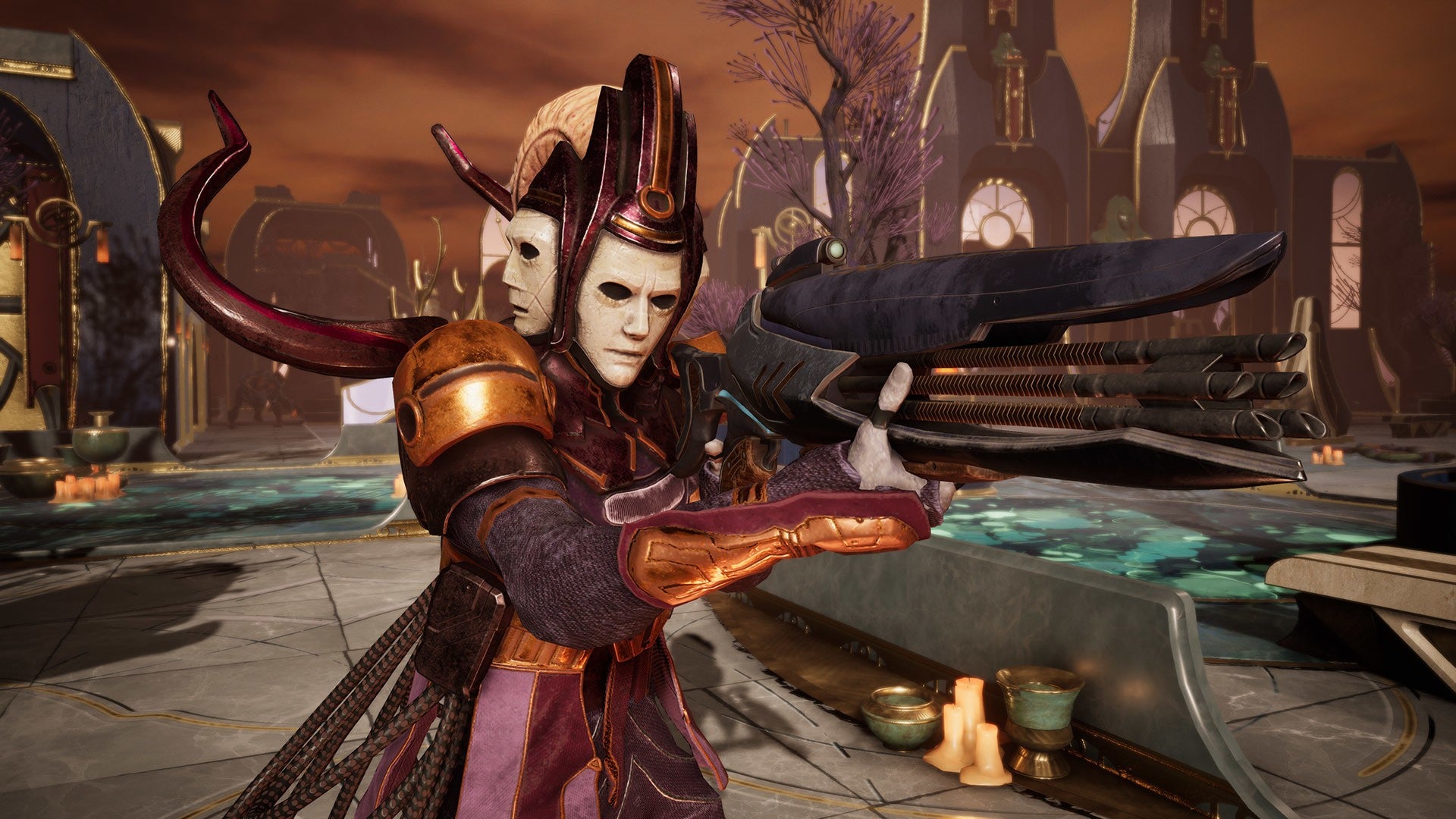
X-COM creator Julian Gollop’s turn-based tactics sci-fi strategy Phoenix Point has seen its final official update on PC to coincide with the release of a complete edition of the game. Out now, Phoenix Point: Complete Edition includes all six DLC released to date. You can take a look at everything included in the package by watching the trailer below.
The Nvidia GeForce RTX 40 series and the problem with leaks

It’s kind of remarkable how little we really know about Nvidia’s next gaming graphics cards, the RTX 40 series. AMD are openly working on next-gen, RDNA 3-based Radeon GPUs, and Intel are gearing up for the full launch of their Arc Alchemist cards before the end of summer – yet there’s not been so much as a single presentation slide on Nvidia’s wares. Not the kind of hype-building you’d expect, given how many of the current generation’s best graphics cards have GeForce badges.
Arriving to fill that info void are, inevitably, leaks. If you don’t regularly hang out in PC hardware circles, know that there’s a veritable cottage industry of in-the-know insiders: anonymous but widely known tipsters like Greymon55 and kopite7kimi, who’ve shared enough accurate details on previous GPU and CPU launches that at least some of their sources are solid. Recently, unannounced Nvidia cards like the RTX 4070, RTX 4080 and especially the RTX 4090 have become this industry’s hottest commodities, meaning leakers are also the primary source of GeForce details for the gaming tech world at large.
Apache OpenOffice 4.1.13 Released For Those Not On The LibreOffice Train
Russian Hackers Behind SolarWinds Are Now Hiding Malware In Google Drive
Read more of this story at Slashdot.






